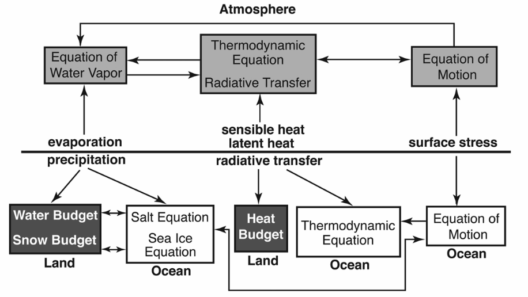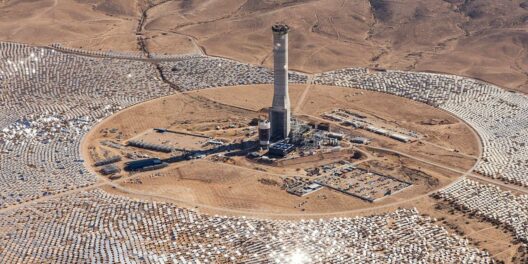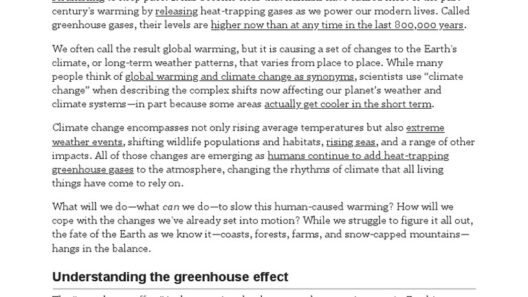The phenomenon of global warming is a clarion call for action amidst an alarming rise in planetary temperatures. Over the last century, the Earth has witnessed an unprecedented increase in its average temperature. This rising trend manifests as what could be termed the planet’s “fever,” invoked by a multitude of anthropogenic and natural factors. Understanding the etiological agents behind this fever is essential for fostering awareness and inspiring collective action aimed at restoring equilibrium to our climate systems.
The foremost catalyst of global warming is the escalation of greenhouse gas emissions, particularly carbon dioxide (CO2), methane (CH4), and nitrous oxide (N2O). These gases, primarily produced from the combustion of fossil fuels, deforestation, and agricultural practices, are proficient at trapping heat in the Earth’s atmosphere. The Intergovernmental Panel on Climate Change (IPCC) unequivocally asserts that human activities have been the dominant force driving the observable rise in global temperatures since the mid-20th century. The intricate web of industrialization and modern convenience continues to exert a profound influence on our environment, forging a relationship that is as detrimental as it is symbiotic.
A pivotal aspect of greenhouse gas emissions is the reliance on fossil fuels for energy production. Power plants, transportation, and residential heating account for a significant proportion of CO2 emissions. These processes release greenhouse gases that form a thickening blanket around the Earth, stifling heat radiation into space. Efforts to transition toward renewable energy sources, such as solar and wind, have gained traction; however, the inertia of existing infrastructures poses a formidable challenge. The sociopolitical landscapes surrounding energy policies complicate this transition, as economies still heavily lean on fossil fuel exploitation.
Deforestation represents another critical factor contributing to the planet’s fever. Forests, often termed the lungs of our planet, play a crucial role in carbon sequestration—absorbing CO2 from the atmosphere. When forests are cleared for agriculture, logging, or urban development, not only is this vital carbon sink diminished, but the carbon stored in trees is released back into the atmosphere. The Amazon rainforest, frequently dubbed the “Earth’s lungs,” is under severe threat from deforestation, leading to significant ramifications on both local and global scales. Preserving and restoring forested areas must be a priority in mitigating global warming.
A compounding factor in the narrative of global warming is the emission of methane, a greenhouse gas with a heat-trapping potential vastly superior to that of CO2. Methane emissions result from livestock digestion, landfills, and natural gas recovery processes. Efforts to curtail methane emissions have highlighted the profound impact of agrarian practices. Transitioning to more sustainable agricultural practices and reducing food waste could significantly address this issue. Furthermore, enhancing waste management systems to minimize emissions from landfills is another strategic avenue worth pursuing.
The complex interplay of climatic feedback loops amplifies the effects of these emissions. Warming temperatures lead to the thawing of permafrost, which releases additional methane into the atmosphere. These feedback mechanisms can create a snowball effect, compounding the initial cause and exacerbating warming trends. The Arctic, a region sensitive to climatic shifts, serves as a poignant indicator of the planet’s fever. Melting ice caps not only contribute to rising sea levels but disrupt entire ecosystems, altering weather patterns globally.
Moreover, human-induced land use changes exacerbate global warming. Urbanization compacts ecosystems and reduces biodiversity, thus diminishing the planet’s ability to naturally regulate itself. The phenomenon of urban heat islands demonstrates this transformation, where cities experience higher temperatures than surrounding rural areas due to extensive asphalt, concrete, and reduced vegetation. Adoption of sustainable urban planning practices, promoting green spaces, and reforesting urban areas can alleviate some of these challenges.
Natural phenomena also play a role in climate variability, though their impacts are dwarfed by human influence. Volcanic eruptions, for instance, can momentarily cool the atmosphere by ejecting aerosols and reflecting sunlight. However, these events are sporadic and cannot account for the long-term trends observed in recent decades. Understanding the normalcy of natural variability is crucial to underscore the urgency of addressing human-induced factors, which overwhelmingly dominate climate trends.
The psychological perception of climate change further complicates efforts to combat warming. Many individuals struggle with the concept of climate change, balancing between inconvenience and perceived urgency. This discord often leads to climate apathy or fatalism, where people feel overwhelmed by the enormity of the crisis. It is critical to tailor communication strategies that elucidate the clear and present dangers of global warming while offering tangible avenues for engagement and change.
Community-based initiatives, legislative advocacy, and personal accountability can drive momentum towards significant climate action. More than merely lamenting the disease of global warming, societies can adopt proactive stances, demanding accountability from corporations and governments alike. Not only is the responsibility of combating climate change collective, but it is also personal—a matter of lifestyle choices, consumer behaviors, and civic engagement.
Ultimately, the planet’s fever exemplifies the intricate and perilous relationship between human activity and climate systems. The underlying causes are well-documented, yet the solutions require an amalgamation of scientific, social, and political efforts. The time for discourse is now; proactive measures are imperative to ameliorate the conditions of our ailing planet. Each small step, when aggregated, contributes toward healing the Earth’s fever, restoring balance within our climate, and ensuring the prosperity of future generations.







